I have an object that sits at point 0,0. This object cannot share space with any other object of its type that may appear on top of it, next to it, above it, etc.. There may be more than a few of these objects present overlapping each other and i have no knowledge of where the other ones are placed until i try the collision detection method.
My thinking is that i'll use a collision detection along side a grid search. Along the lines of the photo below.

The object will first try its default best case location. If that doesn't work then it tries to the left, left-above, left-below, etc, until it has searched all the #1 positions. Then it moves onto the #2 positions and so on until it finds a place to drop the element where it won't be overlapping another.
this is the code i'm playing around with right now but it is choosing some very, very random locations for things. I'm pretty sure it isn't following the algorithm i described above.
for (let i = 0; i < 5 && this._hasCollisions(this._tagWrapper); i++) {
/**
* This algorithm explores positions inside nested boxes.
* The move algorithm behaves the following way. It goes,
* down, up, left, down, up, right * 2, repeat.
*
* For example this is how it works given the height of 5 and a width of 7
* numbers are expressed in the offset generated
* 1: 5,0 4: 5,-7 7: 5,7 10: 10,-14
* 2: -5,0 5: -5,-7 8: -5,7 11: -10,-14
* 3: 0,-7 6: 0,7 9: 0,-14
*/
// Calculate which box the collision detector is working in
// This happens every 9 iterations
let multiplier = (i / 9) + 1;
/**
* Get the x offset
*/
if (i % 3 === 0) {
// Clear the height offset on multiples of 3
xOffset = 0;
} else {
// Set the height to the multiplier
xOffset = this._tagWrapper.offsetWidth * multiplier;
}
if (i % 3 === 2) {
// Get the sequence 2, 5, 8, 11, 14, etc..
xOffset *= -1;
}
/**
* Get the y offset
*/
if (i > 2) {
// Set the width to a multiple of the multiplier and assign the existing negativeness
yOffset = this._tagWrapper.offsetHeight * multiplier * (yOffset > 0 ? 1 : -1);
}
if (i % 3 === 0) {
// Flip the sign every 3 numbers
yOffset *= -1;
}
console.log('iteration', i);
this._tagWrapper.style.top = (basePosition.y + yOffset) + 'px';
this._tagWrapper.style.left = (basePosition.x + xOffset) + 'px';
}What is the best way to go about performing this search? I already hav